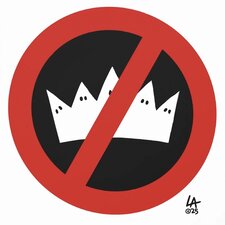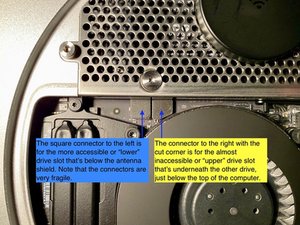Installing ChromeOS Flex on a Mac mini with dual SSD drives
This post is about installing ChromeOS Flex on a Mac mini with dual SSD drives and how to somehow pick the target drive manually.
I successfully installed ChromeOS Flex on a four-core Mac mini Intel Core i7. This OS will run on almost any 64-bit PC or Mac hardware. It even works very well on my ancient but heavily upgraded Mid 2007 Core2Duo iMac, because after all that is an AMD64-based machine too. That is not the issue here and I have no complaints about how ChromeOS works. It is what it is and that’s just fine, and if you don’t like it then there are many other fine operating systems out there. I like ChromeOS quite a lot because it is so simple, secure and wicked fast.
ChromeOS has ONE MAJOR FLAW, however, and it is really serious and also remarkably stupid. Unlike almost every other operating system that has ever existed in the world, yes, even the Devil’s own OS, Windows, the ChromeOS installer DOES NOT let you pick which hard drive or partition you want to use! If you proceed, and your computer has only a single internal SSD or hard drive, the installer will simply erase that and wipe out any partitions and destroy every bit of information you may have on it and greedily, ruthlessly, gobble up the entire drive. And, of course, unlike every other OS, it won’t let you use external drives either.
In addition, ChromeOS uses a very funky partitioning scheme that not even the best Linux, Windows or Mac partitioning tools can handle properly. It uses a number of overlapping, unknown, home made, nonstandard partitions and other crazy things just to be extremely difficult. And while it is possible to clone a ChromeOS drive (and I have done it) it is not at all easy. Google REALLY does not want you to be free and will not allow you to make your own choices.
To make things a little clearer, below is the original drive configuration of that computer:
disk0 / APPLE SSD / Lower / SM 128E. This is an SSD made by Samsung.
disk1 / APPLE HDD / Upper / 1 TB HTS… and then some long and tedious number or other. This is a hard drive made by Hitachi.
These two form a logical “Hybrid Drive” that may have been a good idea in the summer of 2012 but a ridiculous thing today.
Now, when I installed ChromeOS Flex on this Mac mini, for some reason the installer picked the much slower disk1, wiped it squeaky clean and took it over. This worked very well, but the installer did not even bother to ask: “Now then, citizen, dear customer, do you want to use disk1 or disk0 for ChromeOS? Or perhaps some external drive of your choice?” Oh, nooooooo…. Freedom of choice… We can’t have that, can we?
This disk1 is a regular, old style, very worn, mechanical, spinning 1 TB Hitachi hard drive, and it’s in the “upper” and almost inaccessible slot, the drive bay closest to the Mac mini’s metal enclosure… but the lower drive when you see it from the perspective of most of us. To pull out disk1 you have to basically disassemble the whole Mac mini and even pull out the logic board. It is below the more accessible disk0, the drive bay that is located directly under the metal antenna plate and in this case holds a 128 GB Samsung SSD drive… This is the “lower” slot…
OK, so finally, after all this talking (and I apologize for boring you numb and senseless with my dreary blah), here is my absolutely fascinating question to you. Do any of you good people out there in the known universe happen to know how ChromeOS auto-magically picks the install drive? (And if there is a way to manually FORCE it to use either disk.) Why did it grab the slow disk1 and not the much faster disk0 in this case?
I will replace the old Hitachi hard drive and install a new SSD there as disk1, or move the existing 128 GB SSD to this position. Will the ChromeOS installer pick disk1 again or will it use disk0?
It will be interesting to see what your responses will be. I am very thankful for any advice or information you might have. :D
Thanks in advance!
skjell, new member
Is dit een goede vraag?

 1
1 
 338
338  974
974 
1 Opmerking
Chrome OS Flex runs very well on the Mac mini Quad-Core i7. It is totally crazy that Google does not allow users to pick the hard drive on which to install it. There is as far as I know only one way to do it. You will have to physically disconnect the drive you don't want the Chrome OS installer to touch and that you wish to keep intact. It will then install very easily as long as the target drive is an SSD. You then use something like the rEFInd boot manager to pick the drive you want the machine to boot from. Why does this have to be made so difficult? It's late 2023, not 1983! If Chrome OS Flex was truly FREE I believe millions more would use it.
door skjell